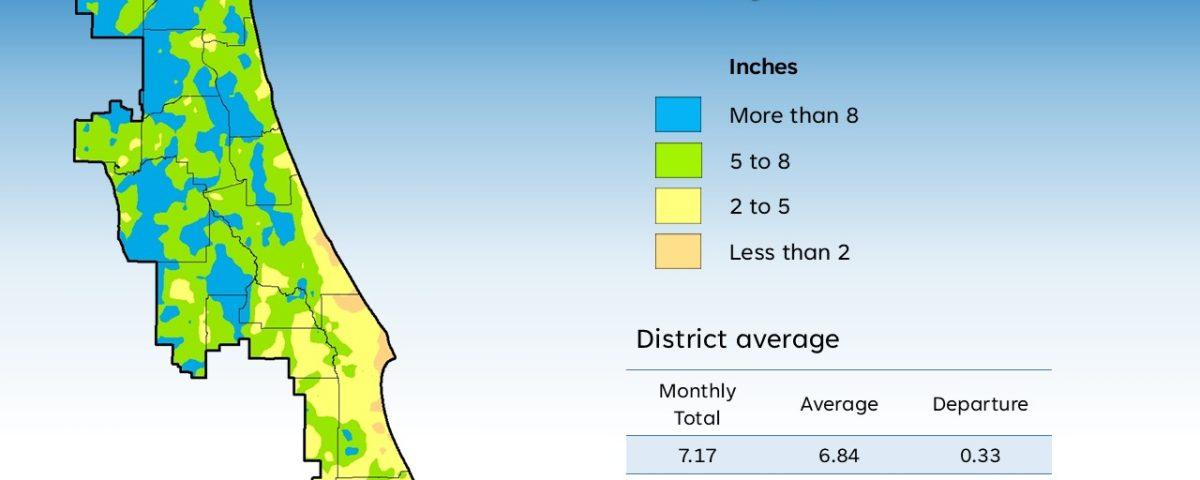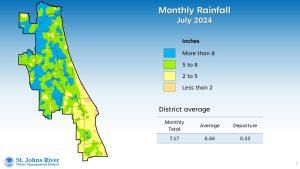July rainfall returns to above average, ending a five-month dry streak

PALATKA, Fla., Aug. 14, 2024 — After five consecutive months of below-average rainfall, July brought a much-needed increase in precipitation to the St. Johns River Water Management District’s 18-county region. Eleven of these counties saw above-average rainfall, with northern and central areas benefiting the most. However, southern counties experienced a shortfall, including Brevard which was nearly 2.5 inches below compared to the July average.
Hurricane Debby had a mixed impact across the District. Southern counties and the central east coast, extending up to Flagler County, received minimal rainfall from the storm. In contrast, areas closer to the storm’s center, particularly the west and northern portions of the District, saw substantial rainfall. Nassau and Baker counties, for instance, averaged over 8 inches of rain, and one area in Nassau County reported more than 10.5 inches over five days.
A full report outlining July’s hydrologic conditions was presented at the District’s Governing Board meeting. Highlights include:
Rainfall
- Districtwide average rainfall was 7.17 inches, 0.33 inches above the monthly average.
- County-wide monthly rainfall totals ranged from a high of 9.71 inches in Nassau County to a low of 3.84 inches in Brevard County.
- Cumulative rainfall for the past 12 months was 50.33 inches, 0.68 inches below the long-term average.
- Twelve counties are now below their annual average, with Alachua County having the greatest deficit of nearly 5.5 inches below its average.
- The U.S. Drought Monitor lists areas of Brevard County as abnormally dry, with a small area experiencing moderate drought conditions.
Groundwater
- Upper Floridan aquifer conditions generally fell within the normal range by the end of July.
- Groundwater levels districtwide, expressed as a single index, were in the 33rd percentile, normal for this time of year, but showing an increasing trend.
Spring flows
- Silver Springs recorded a mean monthly flow of 544 cubic feet per second (cfs), or 352 million gallons per day (mgd), a 16 cfs decrease from May, which remains just within normal range for this time of year.
- Blue Spring station in Volusia County reported a mean monthly flow of 146 cfs, or 94 mgd, within the normal range.
- Rock Springs experienced a slight increase in mean monthly flow and remains in the normal range at 58 cfs (37 mgd).
- Wekiwa Springs exhibited a slight increase, recording a mean monthly flow of 62 cfs (40 mgd), and is also in the normal range for this time of year.


